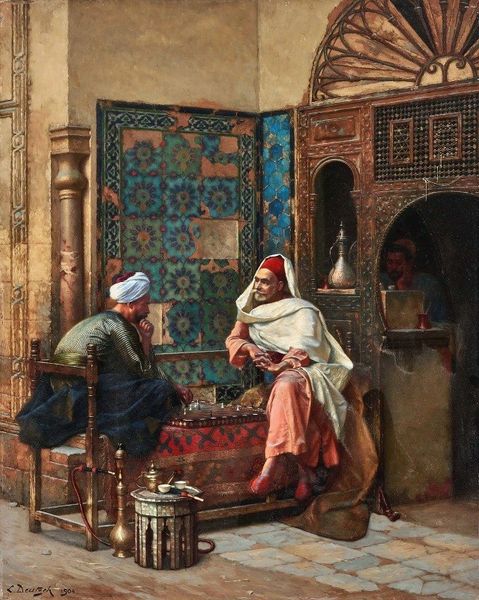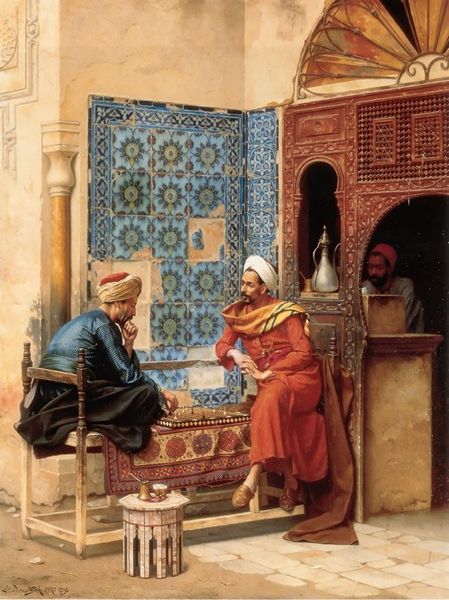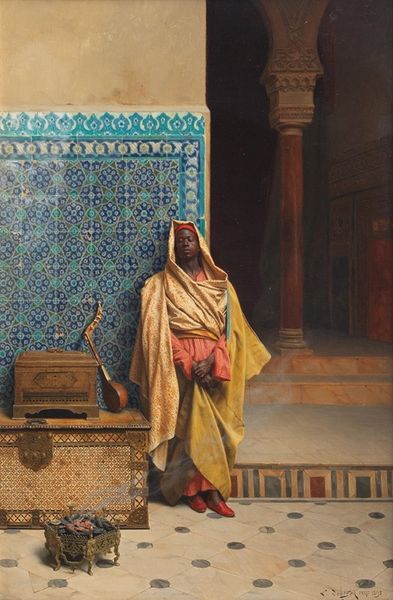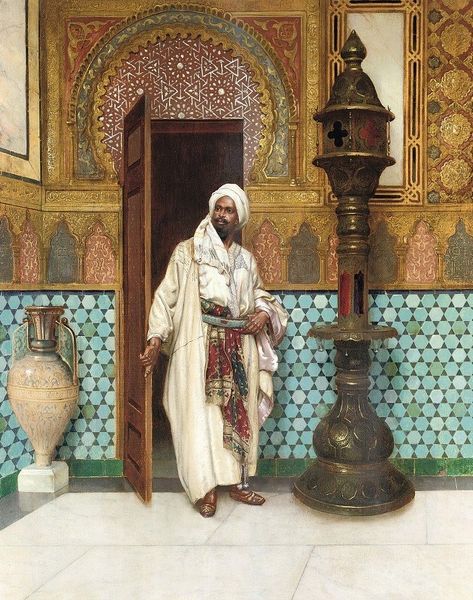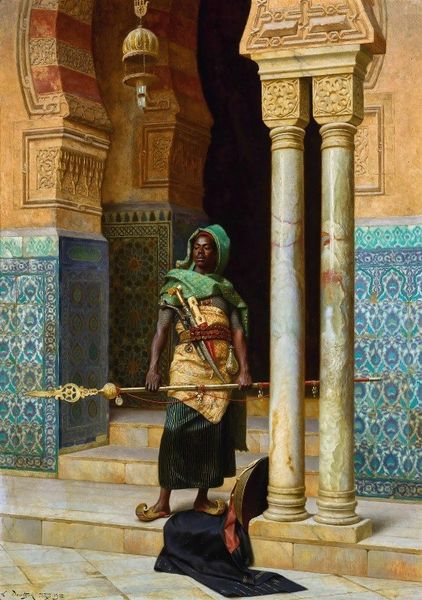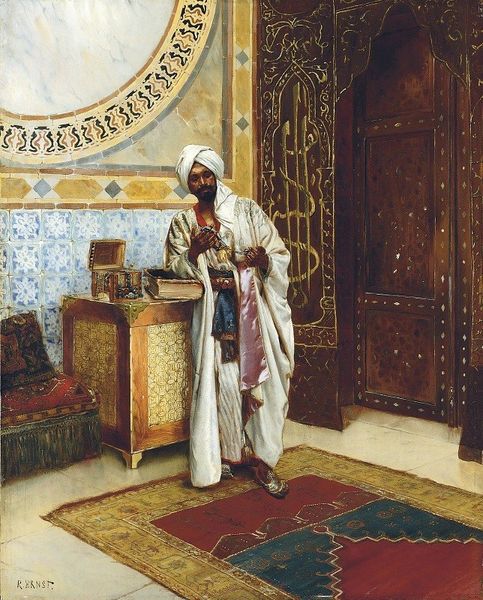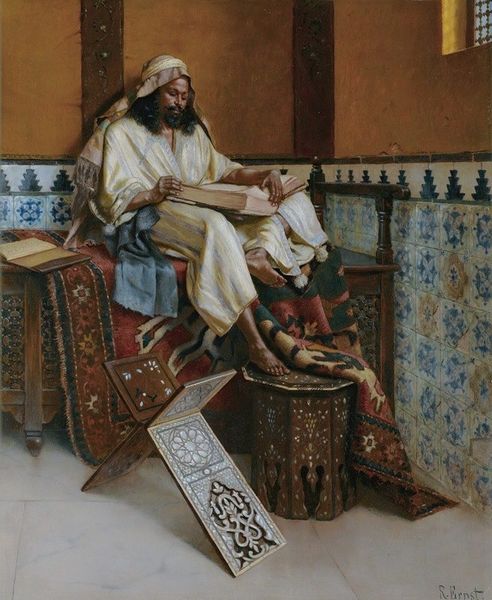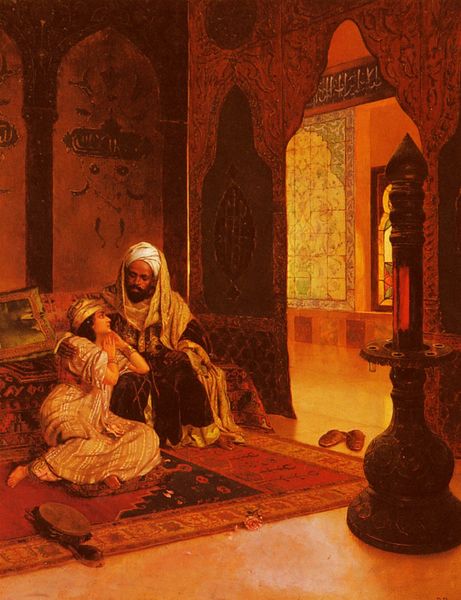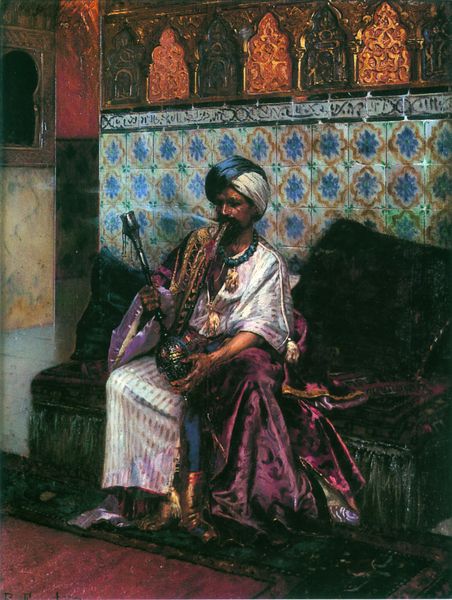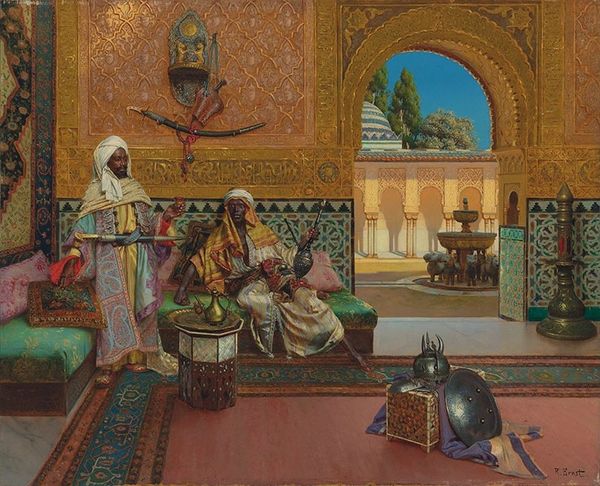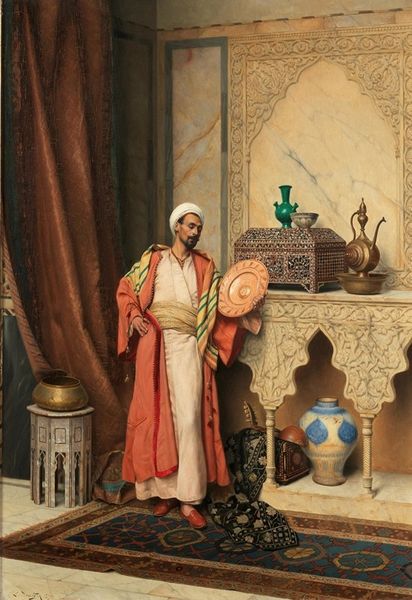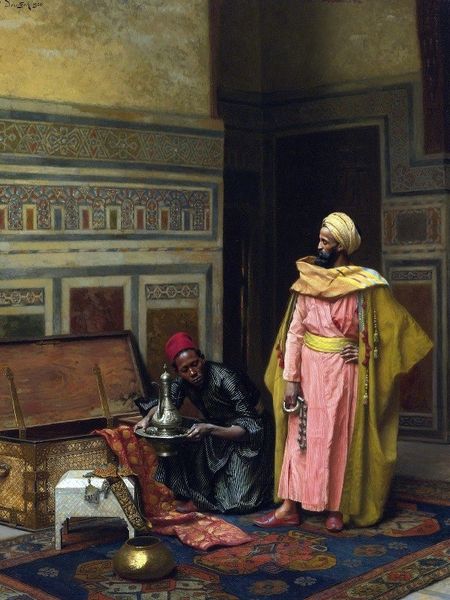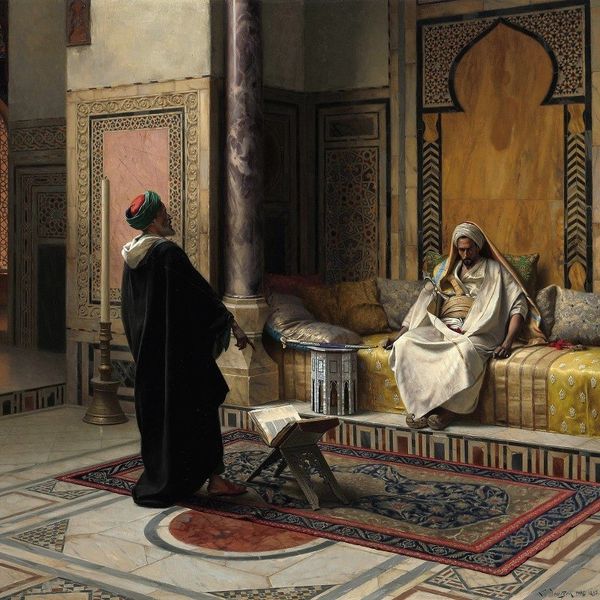
oil-paint, impasto
#
portrait
#
figurative
#
oil-paint
#
oil painting
#
studio composition
#
impasto
#
orientalism
#
genre-painting
#
academic-art
#
portrait art
Copyright: Public Domain: Artvee
Curator: Here we see "The Smoker," rendered in oil paint by Ludwig Deutsch in 1903. Editor: My first impression is one of contained opulence. The scene feels intimate and still, as though we've stumbled upon a private moment. Curator: Deutsch, associated with the Orientalist movement, often depicted scenes from the Middle East and North Africa, fueled by European fantasies about the "Orient." It’s crucial to interrogate the power dynamics inherent in such representations. This piece is a classic example, with the artist framing the man as an object of exotic interest. Editor: Absolutely. Beyond the problematic gaze, the symbolism captivates me. The hookah represents leisure and contemplation. And, what about the colours themselves, that interplay of gold, russet and ruby! How might they echo specific cultural values or aesthetic traditions? And then there’s the man’s stillness... his posture is so erect, so very controlled. Curator: Exactly! His controlled posture speaks to a certain constructed masculinity within a colonial framework. It's not an authentic portrayal but a Western interpretation filtered through assumptions about Arab identity, reducing the man to a stereotype. It also reflects the colonial male fantasy of the oriental 'other', one that both is subordinate and virile at once. Editor: The setting itself tells a tale: the geometric patterns of the tile work, the decorative carvings... these aren't merely aesthetic choices; they're fragments of a cultural lexicon. I am seeing strong symbols of wealth, power and authority at play. Curator: And that framing emphasizes his passivity, stripping him of agency, transforming a lived experience into an ethnographic display for Western consumption. That little water jug tucked into the alcove and visible to us, might hold its own symbolism, tied to ritual practices that this colonial vision purposefully misses. Editor: The painting operates as a symbol. Its symbols invite critical consideration. Beyond its orientalist legacy, however, let us find meaning to promote respectful consideration and thought. Curator: By acknowledging the historical context, we engage with the work and see it more completely, hopefully provoking discussions on its colonial legacy in today's world.
Comments
No comments
Be the first to comment and join the conversation on the ultimate creative platform.
